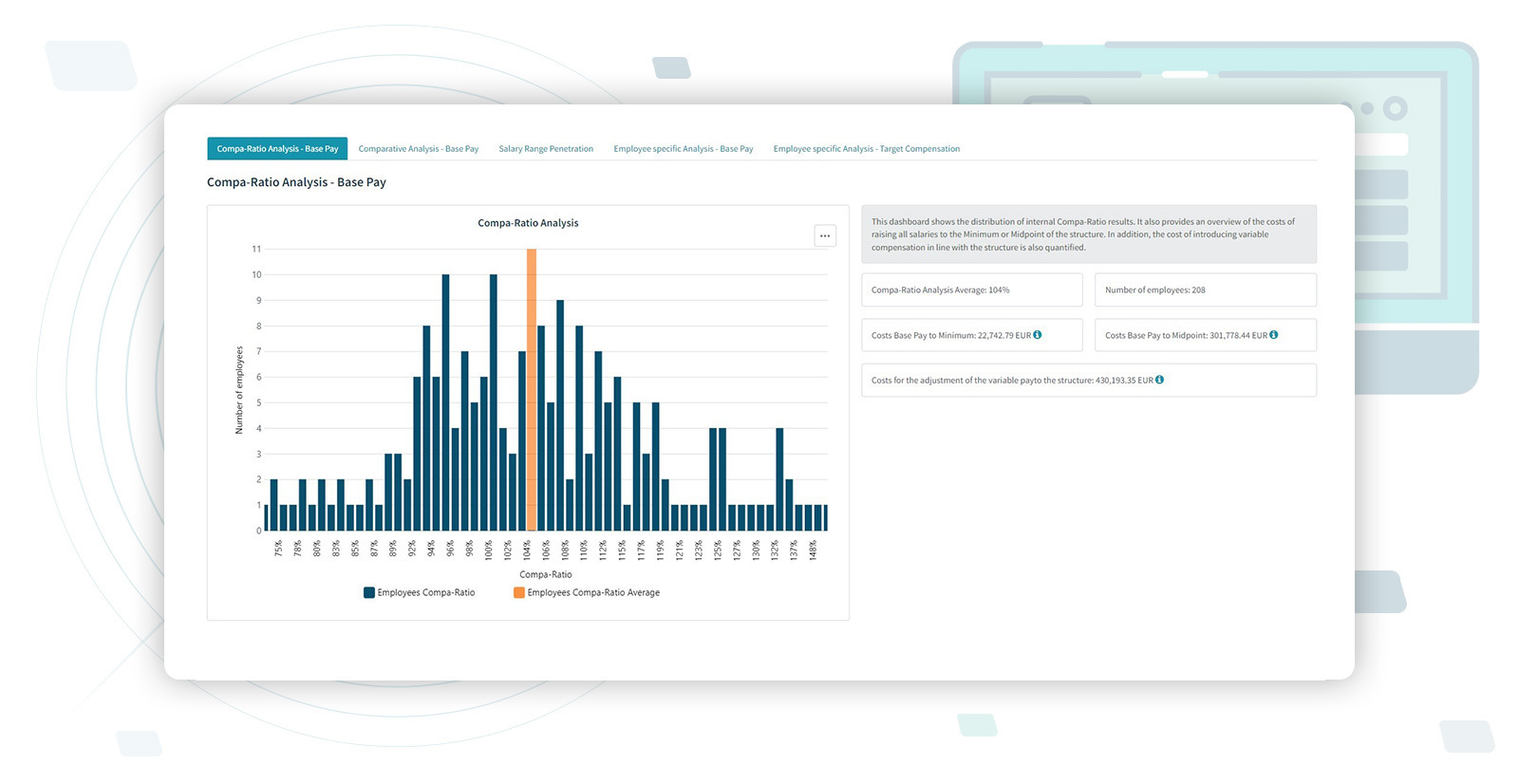How Compa-Ratios Are Calculated
Once you’ve got your hands on pay data, calculating compa-ratios is simple. It’s just a matter of dividing the salary of an individual by the midpoint of the salary range and then multiplying it by 100:
Current salary/market average x 100
So, let’s imagine for a moment that the midpoint salary of a software engineer role is $85,000. Your latest-hire software engineer is locked in with a salary of $80,000.
How does this measure up as a compa-ratio? Well, if we divide $80,000 by the market average and multiply by 100, we get a value of 94. If we express this as a percentage - 94% - we can see that your latest-hire is receiving slightly below-average pay.
Compa-ratio percentages generally fall between 80% and 120%, with 100% considered the market value. New hires tend to receive compensation on the lower end of this spectrum so that they have room to level-up, whilst longer-tenured employees and those with exceptionally in-demand profiles might earn salaries closer to the top mark.
How Compa-Ratios Are Seriously Useful for Organisations
Calculating a compa-ratio is just the first step; the value comes when organizations use it in further processes. This simple calculation can play a big part in investigating current pay practices and guiding future compensation decisions.
First up, compa-ratios are an objective decision-making tool for establishing fair, consistent salaries for employees. They give a simple mathematical indication of how employees in the same role - but perhaps with different levels of experience, tenure, and responsibilities - are actually earning.
The expectation would be that someone with an appropriate level of skills, experience and qualifications would be yielding a 100% compa-ratio whilst established professionals are scoring higher. If this isn’t the case, organizations can assess and - if necessary - consider making salary adjustments.
Next, compa-ratios give invaluable insights about pay equity. Analysts can compare the average ratio of any subgroup to the group average to see differences between groups.
Spotting these differences allows organizations to tackle pay inequality. By calculating a compa-ratio for men in an organization, and doing the same for women, companies can see if they have a gender pay gap. A situation where men are scoring 100% whilst women are somewhere in the 90s would indicate an immediate need to find the root cause.
Compa-ratios are also a valuable tool for determining new-hire salaries. If an organization is looking to hire employees with a few years of experience under their belt, then offering a salary that surpasses the midpoint is ideal. In contrast, offering less than 100% might work when taking on junior hires that are expected to grow with the company.
Ultimately, compa-ratios are a neat, tangible metric that can be used to make sure an organization is on the right track when it comes to pay. After all, there are big repercussions for companies that are way off.
Consistently getting scores in the double figures? An organization will struggle to attract and retain top talent. Massively overshooting 100%? Annual budgets could be seriously stretched.

Compa-Ratios in gradar
With both internal and external comparison ratio analysis built into the system, gradar allows businesses to perform detailed, 360 pay analysis.
Way beyond simply providing accurately calculated compa-ratios, the system can actually give a projection of how much it would cost to raise all salaries to the minimum or midpoint of the structure.
Vitally, it can also compare different subgroups within a company’s staff. With manual control over different filters, HR can identify and investigate any disparities that might indicate pay inequality.
Salary range penetration assesses the position of an individual’s salary on the associated salary range, allowing organizations to see how individual employees stand in relation to the overall salary range.
And to assess how organizations are measuring up compared to competitors? External compa-ratio analysis is also available in gradar. This displays the actual salaries of employees in relation to external market data and highlights any overall market deviation.
So, using comparison ratios as a foundational metric, gradar gives organizations the objective insights they need to create a pay system that’s both internally equitable and externally competitive.



